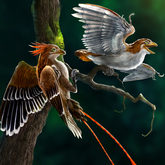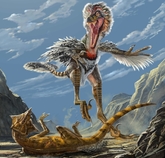Spurred on by his lifelong passion for palaeontology and biology, in 2011, Dr Wang Qi further developed his research...
at the invitation of Dr Wang Yuan, the Director of PMC, who asked him to redesign the museum’s internal space in a bid to revitalise and update its offerings. One of the key findings that emerged from Dr Wang Qi’s research in China, was the absence of curators who could showcase the museum’s collections in a way that makes them accessible and engaging to the general public.
The PMC had to contend with a small space that needed to be better organised, along with a rigid exhibition narrative that was too scientific. Without a curator, the scientists had stepped in to develop the information on the exhibits.
The resulting project, involving four undergrads and a postgrad student, began regenerating the PMC in late 2011. The team, led by Dr Wang Qi, drew up five schemes that explored the use of the PMC’s architectural space to enhance the narrative or storytelling around the theory of evolution and the diversity of prehistoric flora and fauna.
The research broke new ground in China where it was hailed by the Chinese media and enabled the museum industry to overcome the traditional division of exhibition and architecture by introducing the role of the curator.
The project was featured in the Journal of Architectural Techniques in 2012. At the same time, the impact of the research expanded and accelerated, enabling Dr Wang Qi to set up international collaborations with other natural history museums around the world. The next year saw the publication of Dr Wang Qi’s book on the research carried out at the Natural History Museum, entitled: From Crystal Palace to Darwin Centre, the Architectural Evolution of Natural History Museum in London.
The Dinosaurs of China exhibition has enabled Dr Wang Qi to further his research and shed new light on the “minds-on” factor by encouraging visitors to reconsider interactive exhibitions and museum design. Dr Wang aims to engage schoolchildren to actively think about and interpret the exhibits in their own way. Thus, while the hands are engaged, the children’s minds should be questioning, sorting through sensory inputs and making connections to create their own unique experiences.

Confuciusornis sanctus 孔子鸟 |

Sinornithosaurus millenii中国鸟龙 |